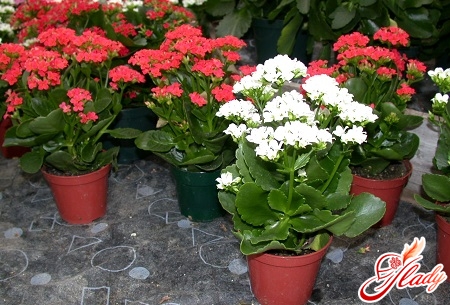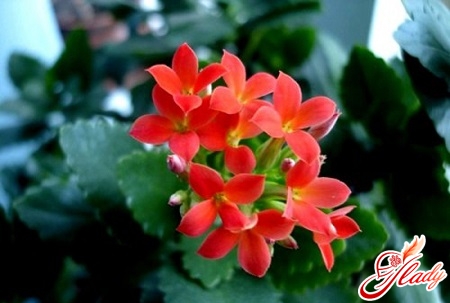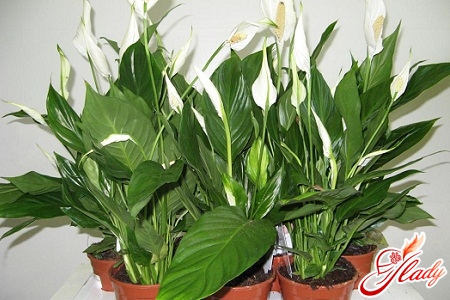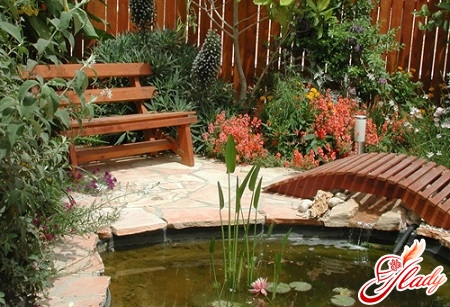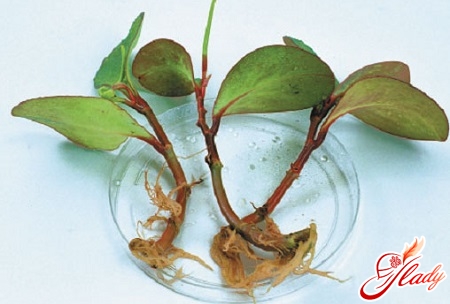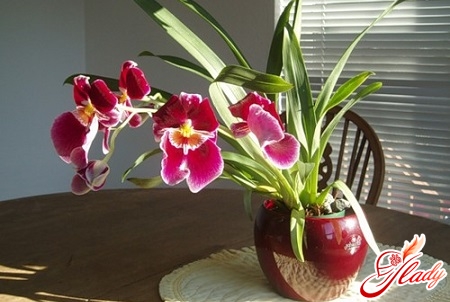 Surely in the collection of the famous detective, and alsoamateur and connoisseur of orchids Nero Wolf (the hero of the detectives Rex Stout) was an amazing orthodoxy Miltonia. After all, such an unusual orchid will want to have in your collection any florist, and what can we say about collectors. However, such a beauty will adorn not only the real collection, but also a more modest collection of house flowers. By the way, this name was given to the orchid in honor of collector Edlajden Milton. What is so good about Miltonia? What in it is so special? How to grow her at home? What care should it provide? Let's try to figure it out.
Surely in the collection of the famous detective, and alsoamateur and connoisseur of orchids Nero Wolf (the hero of the detectives Rex Stout) was an amazing orthodoxy Miltonia. After all, such an unusual orchid will want to have in your collection any florist, and what can we say about collectors. However, such a beauty will adorn not only the real collection, but also a more modest collection of house flowers. By the way, this name was given to the orchid in honor of collector Edlajden Milton. What is so good about Miltonia? What in it is so special? How to grow her at home? What care should it provide? Let's try to figure it out.
Miltonia as a kind of orchids
This orchid, like everyone else, refers toa family of orchids. In general, Miltonia is the name of a whole family of orchids, including more than twenty species. All of them blossom very beautifully, which is what the florists love. Of course, you can not call exotic Miltonia. But there is something gentle and touching in her. And it resembles the well-known Anyutina Glazki. By the way, in everyday life it is called. Noteworthy flowers Miltonia is not only a form that resembles butterflies, but also the color. And especially these flowers make a picture on the petals in the form of dripping drops. Coloring the flowers is also amazing variety - this is a real extravaganza of color: from pure white and saturated purple, from a combination of two colors to a multicolor, from a smooth flow of color to hard contrast. All types of Miltonia are divided into subspecies depending on their origin. The species that came to us from Colombia are called Miltoniopsis, and the Miltonians themselves are called Brazilian species. There are also orchids Miltassia - a hybrid of Miltonia with an orchid of the genus Brassia. Orchids Miltonia - epiphytes. That is, in nature they live on trees and belong to the sympoidal orchids. This means that they grow in the horizontal direction, forming the so-called pseudobulbs (thickenings accumulating nutrients and moisture) in the base of the shoots. Bulbs grow leaves and flower stalks. After flowering orchids, their life cycle continues with the formation of new shoots (growth). 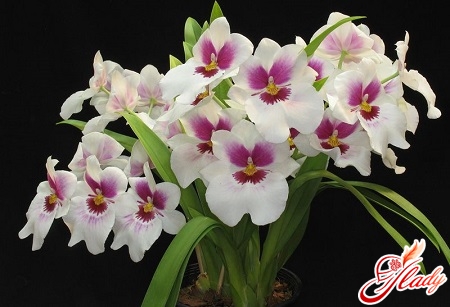
Growing conditions
Although Miltonii and epiphytes, at homegrow in flower pots. Best of all, these plants are suitable plastic dishes that do not allow moisture to evaporate quickly. At the bottom of the pot must lay a drainage layer of large pieces of bark, and the pot itself is filled with a special primer or soil. Miltonia grow well in soil, consisting of spruce bark, sphagnum or perlite. How comfortable it is for Miltonia to have her location in the room can be judged by the color of the leaves. This, by the way, is one of the features of this orchid. If at this point the plant feels well, then the leaves get a slightly pink tinge. In general, Miltonia likes penumbra. This orchid grows well and blossoms on a light window, if it goes to the East or West. But if Miltonia grows on the southern window, then she needs additional shading. Another feature of Miltonia is the love of temperate temperatures. It would seem that the flower of the rainforest should be comfortable in hot conditions, but no. Comfortable for her temperature - about twenty degrees of heat. However, the coolness of Miltonia also does not favor. Therefore, the temperature below twelve degrees is poor. Especially painful, this orchid reacts to a sharp change in temperature, and from drafts may die.
Care of Miltonia
The main care for this orchid is reduced tocreation of comfortable conditions, proper watering, top dressing and timely transplantation. Permanent abundant watering is necessary for Miltonia's orchid during the period of growth and flowering. At this time, you need to make sure that the soil in the pot is always moistened and do not allow the soil to dry out. However, do not be zealous, since excessive watering can cause rotting of the roots and lead to the death of the plant. Be sure to drain the water from the pan and periodically spray the plant. In winter, orchids enter a period of rest, almost do not grow and do not blossom. At this time, watering should be reduced to a minimum. You should water the flower occasionally, making sure that the soil in the pot remains almost dry. And with the onset of spring and the emergence of the first new shoots, irrigation should be resumed. For abundant flowering orchids need to be fed with special fertilizers. Start feeding should be with the resumption of watering. During budding, fertilizing is carried out once a week, and after the beginning of flowering they do not stop, but simply fertilize the plants less often. Miltonia also needs a timely transplant. However, without the need to move a flower from one pot to another, you do not need to. This must be done only when the orchid becomes cramped and its roots begin to simply stick out of the flower pot. For the transplantation take a pot a bit more than before, put a drainage layer on the bottom and prepare the soil mixture. The soil in the old pot is well moistened, kneaded and taped, and then carefully extracted the plant. Remove the old soil from the roots and place the plant in a new pot. Holding it on the weight, we start pouring a new substrate, gently compressing it. Thus on a ground do not press, and tap pot. So that the soil fills the free space between the roots, it is compacted with a wooden stick, and quite long roots, if they do not fit into the pot, are left above the surface of the substrate. The first three to four days after transplanting the orchid is not watered, but constantly sprayed. It is not recommended at this time and fertilize the plant. And the transplant itself needs to be done only before the active growth or after flowering. 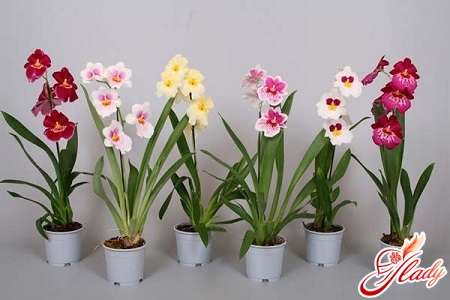
Diseases and pests
Care of any indoor plant also involves treatment in case of diseases or damage to pests. Miltonia's possible ailments, their causes and necessary help:
- Salinity of the soil leads to the drying out of the tips of the leaves. If you start watering the plant with soft or rain water, the salt balance of the soil will be restored.
- Rooting leads to excessive watering. In this case, it is necessary to transplant the plant into a new disinfected soil and reduce watering.
- Drying of leaves and stems can be a signal ofdamage to the plant by the worm. The wreckers are mechanically destroyed, wiping the leaves and stems with a tampon soaked in alcohol, and then treated with insecticides.
At the first signs of drying, oppressedthe state of the plant, lethargy and dropping buds Miltonia should be poured and sprinkled with phytosporin. It is advisable to transplant the plant into a new pot and replace the soil. Do not forget that the most frequent cause of ailments of indoor plants is improper care. Therefore, try to choose a convenient place for your orchid, protect it from direct sun and drafts, do not allow sharp changes in temperature and water on time. But even competent care does not guarantee you an abundant flowering. Miltonia is so capricious that no one will say exactly how the newly acquired plant behaves. But, as you know, who does not take risks, he does not win. Therefore, still risk to settle in his house, this beauty. Perhaps it is you who will grow and blossom without problems. Good luck! We advise you to read:




